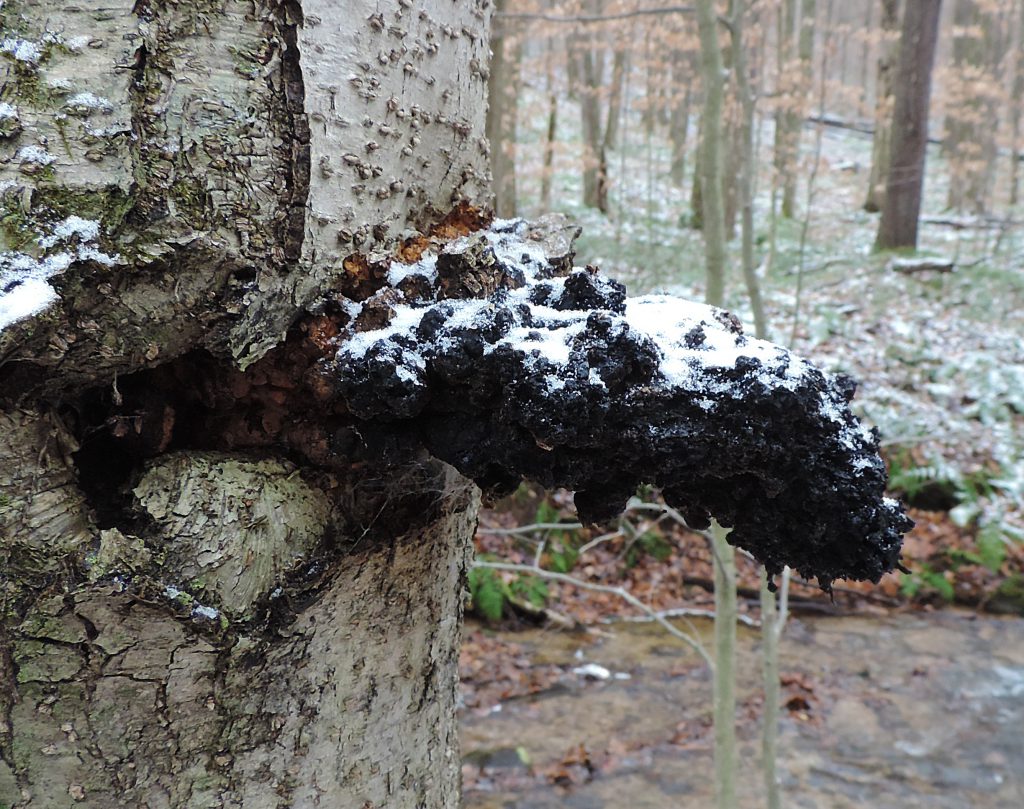
It’s hard to imagine anyone would make a fuss about Inonotus obliquus, the celebrated Chaga fungus.
Certainly there are mushrooms that could outperform this irregularly-shaped, soot-colored species in a beauty contest. There’s hardly a debate about that.
It’s not even a prized edible fungus, either. Chaga is essentially a hardened mass of mycelia that’s a bit too tough to swallow.
So why are most online mushroom identification forums inundated daily with photographs depicting every form of blackened arboreal growth, each one accompanied by the million dollar question: “Is this Chaga?”
Simple, really. Chaga is a medicinal mushroom (it’s technically a medicinal sclerotium) that, in addition to being valued as a folk medicine in Russia and Western Siberia, has been very well-researched in recent years and lauded worldwide by the masses (scientists and non-specialists alike) for its potential role in treating various human illnesses.
It’s no surprise, then, that enthusiastic mushroom hunters traverse the birch forests every year in search of this desirable fungus, and while no evidence exists suggesting that populations of Inonotus obliquus are dwindling, one might accurately predict what effects this kind of fervent enthusiasm can generate not only upon the fungus itself, but also upon its host tree and potentially the entire ecosystem.
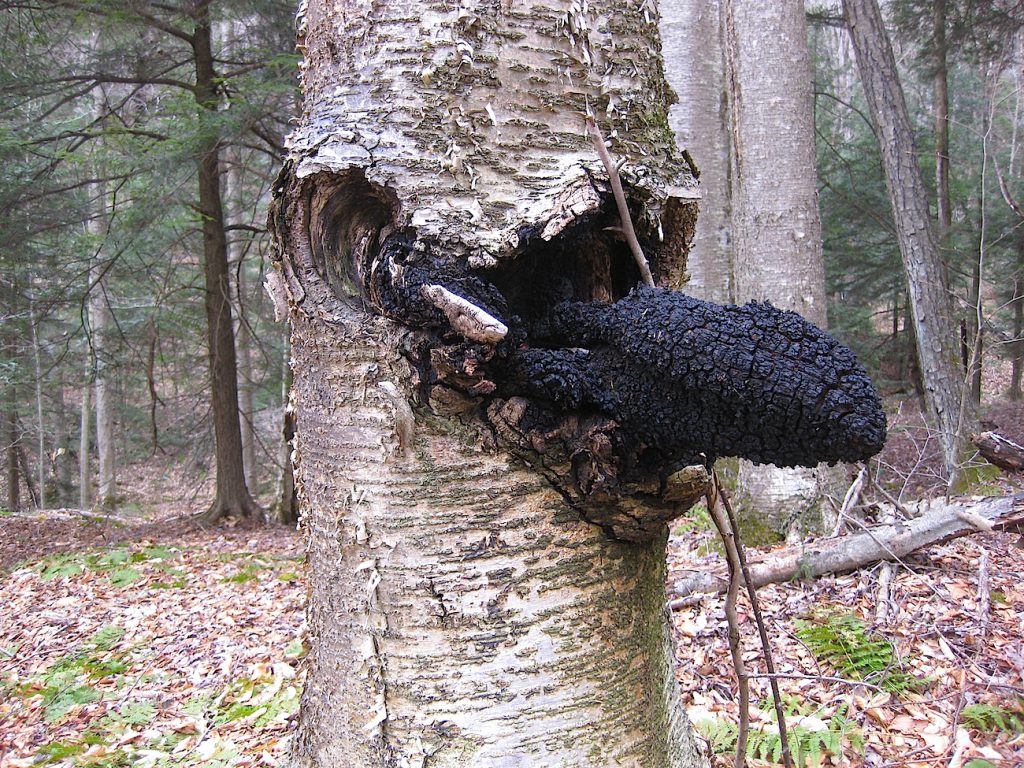
Chaga, without a doubt, performs an essential role in the forest, though any consistent threat inflicted upon the fungus long-term could potentially produce disastrous and widespread consequences. Paul Stamets, as just one prominent example, has discussed this issue in depth while suggesting a shift toward the use of cultivated Chaga mycelium as a solution (1).
And then there’s the issue of accessibility. Chaga is limited primarily to birch trees in the colder climates of the Northern Hemisphere (exceptions do occur), so while many people want to traverse their forests in search of Inonotus obliquus, they simply can’t.
Both issues, then — the sustainability and accessibility of Chaga — warrant a solution, one of which is to look toward alternative plants and fungi that have been analyzed and shown to contain the same exact compounds that render Chaga so enticing.
Another solution, which may at first sound inconceivable, is to look toward fungal and floral species that have been shown within the scientific literature to actually outperform Chaga (!) in various feats of medicinal strength.
In other words, it seems reasonable to suggest that humans can essentially receive the benefits of the Chaga fungus without consuming Chaga… all the while protecting its existence in the wild.
In this article, we’ll take a look at Chaga’s impressive chemical makeup and compare it to the medicinal potential found within other plants and mushrooms, many of which can be readily found all over the world.
Of course, I should provide some context before we proceed. I am certainly aware that an organism cannot be reduced down to its chemical components. We cannot simply create the whole of anything from its myriad parts. (If only nature worked so analytically.) Chaga constitutes much more than every compound ever isolated from it, and to suggest we can fully substitute this fungus with another species — while receiving all of its exact benefits — is silly. This article is meant to provide options on how we can receive similar health benefits using a variety of plant and fungal medicines in the event we do not have access to Chaga, and also as a way to protect and preserve the niche that Chaga occupies in the wild.
Sound good? Let’s proceed…
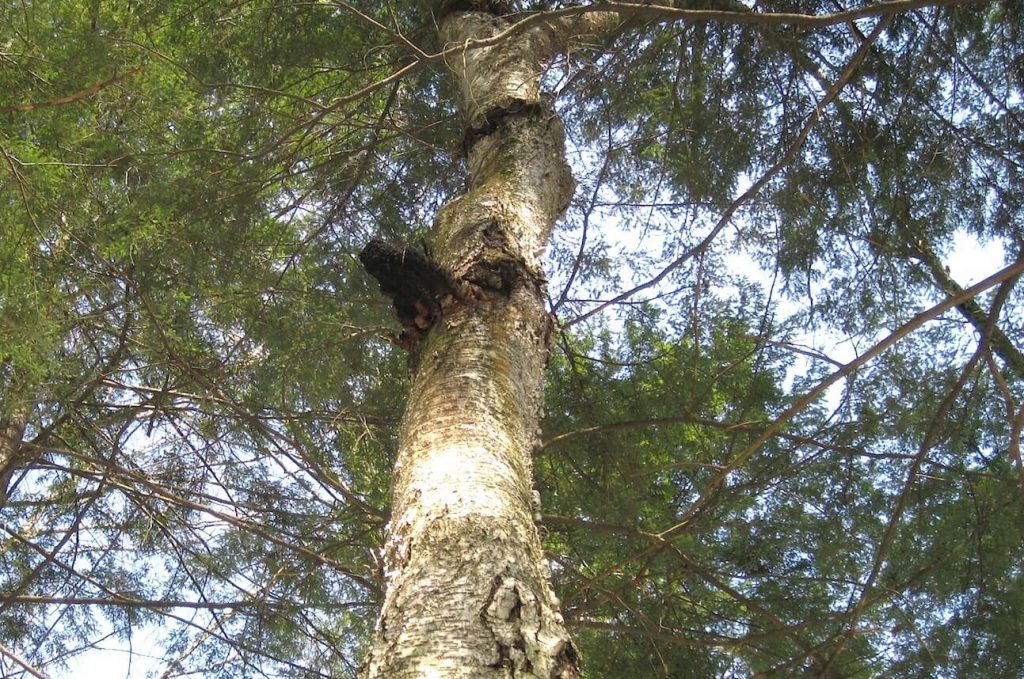
Triterpenes
The scientific literature abounds with studies analyzing the pharmacological activity of triterpenes.
…which are what, exactly?
The extremely simplified answer is that triterpenes are naturally occurring compounds that provide a wide spectrum of biological activity. They’re very common in nature, and the reason why anyone should care about triterpenes is this: Many of these compounds have been well-studied for their roles in benefiting human health.
Chaga is notably hailed for two of its medicinal compounds: betulin and its derivative, betulinic acid (2, 3). Betulin is a triterpene, while betulinic acid is a derivative of a triterpene, known as a triterpenoid. These molecules are concentrated in the outer black portion of the fungus and can be extracted most effectively for human consumption with non-polar solvents (i.e. alcohol).
Betulinic acid has demonstrated anti-bacterial, anti-viral, anti-inflammatory, anti-HIV, anti-malaria, and antioxidant effects in numerous studies (4). Its precursor, betulin, has been shown to possess anti-tumor and anti-cancer properties (5).
Both compounds, however, are not unique to the Chaga fungus. In fact, we can find betulin and its derivative, betulinic acid, quite easily in nature.
As Chaga is essentially a parasite to its host tree (most commonly a birch tree in the genus Betula) it’s not hard to imagine that many of its compounds will be derived from the birch tree. This is what we see with betulin and betulinic acid. Both compounds are created in the outer bark of birch trees, with betulin found in much higher concentrations than betulinic acid (6).
An additional compound found in the Chaga fungus with origins in the outer bark of birch trees is lupeol. Lupeol, another triterpene, has been shown to possess anti-cancer, anti-inflammatory, and anti-microbial properties (7).
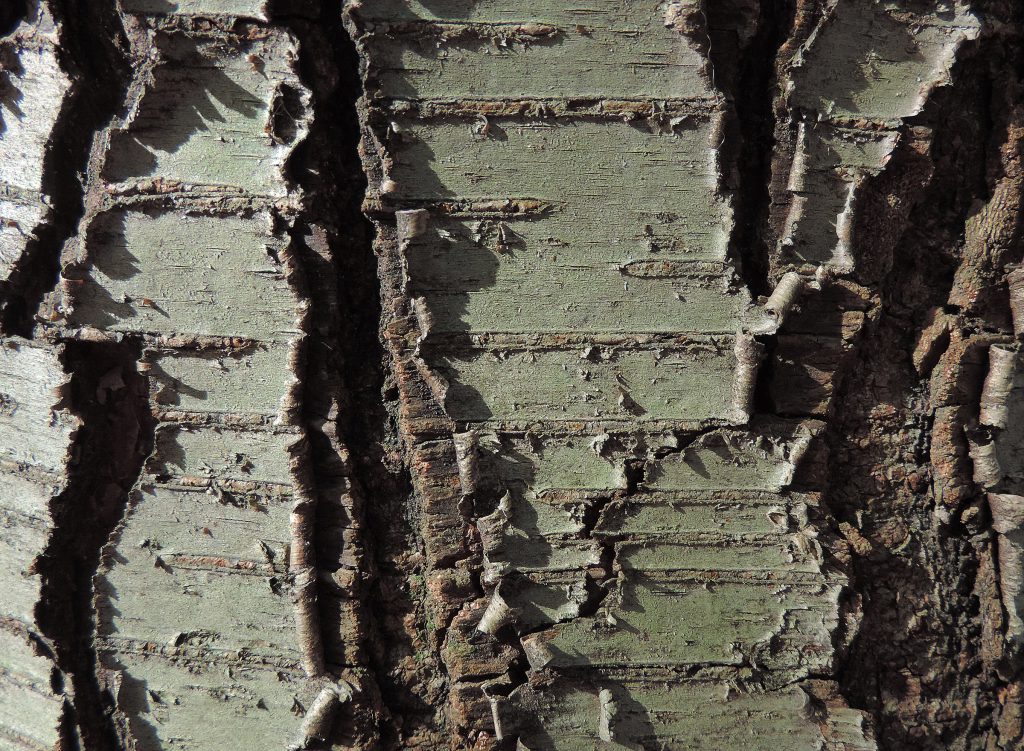
Because the birch tree naturally contains many of the medicinal compounds found in Chaga, we can utilize this knowledge by using birch bark for medicine, sparing the Chaga fungus itself. All 3 of these compounds — betulin, betulinic acid, and lupeol — are most effectively extracted via non-polar solvents, such as alcohol, due to their chemical structures. Vinegar (i.e. acetic acid) may also be an effective solvent (8).
Of course, ruthlessly hacking away at birch trees to obtain fresh bark is not an entirely sustainable solution. Instead, extracting birch bark from recently felled trees or fallen branches for use as medicine is a better option, and while living trees may harbor more medicine, recently felled trees will still contain their active phytochemistry.
In addition to its bark, the birch tree also concentrates betulin in its sap (9). Though not as high in sugar as maple trees, birch trees can successfully be tapped to yield drinkable sap, which can eventually be reduced into syrup.
Useful alternatives to Chaga may include other species that utilize birch as their host tree. Birch Polypore (Fomitopsis betulina, formerly Piptoporus betulinus) is a fungus that generally grows on dead birch trees and logs. A fairly common mushroom, the Birch Polypore contains many of the same medicinal compounds as Chaga, notably the triterpenes. For example, Birch Polypore possesses betulin, betulinic acid, and lupeol, and while its content of betulin is much lower than that of Chaga, it contains a significantly greater concentration of lupeol in certain extracts (10).

Betulin and its derivatives can additionally be found in other species. Alder trees (genus Alnus) contain all 3 aforementioned compounds — betulin, betulinic acid, and lupeol (11). Not surprisingly, many historical cultures throughout North America used Alder tree bark to treat various conditions, such as headaches, rheumatic pains, colds, congestion, and anemia (12).
Other sources of betulin (13) include Sacred Lotus (Nelumbo nucifera), Indian Jujube (Ziziphus mauritiana) and the seeds of common Jujube (Z. vulgaris var. spinosus).
Betulinic acid, a derivative of betulin, is generally found in low concentrations in nature. However, the rare exception is Buckbean (Menyanthes trifoliata) — a bog plant native to the United States that contains a high concentration of this compound. Betulinic acid can also be found in Selfheal (Prunella vulgaris) and Rosemary (14, 15).
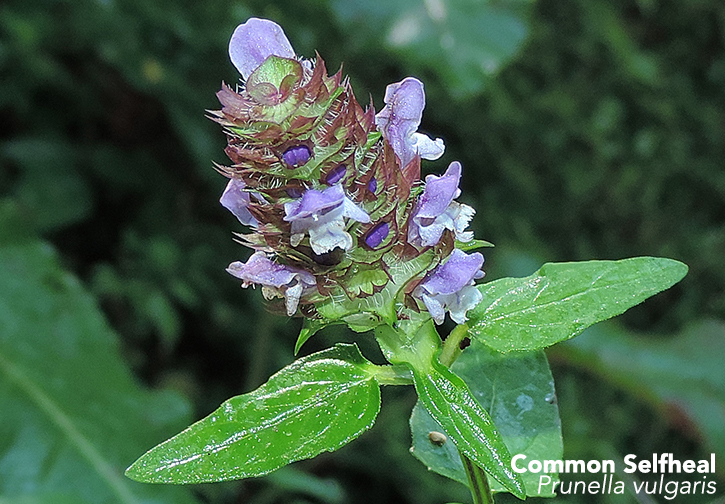
Within the fungal kingdom, several additional medicinal mushrooms have been reported to contain pharmacologically active triterpenes. The Reishi mushroom (Ganoderma lucidum) is one example among many. Not only is Reishi replete with various triterpene compounds, it has been reported to contain 3 times the total amount of triterpenes as Chaga (16).
To summarize: Triterpenes are responsible for many of Chaga’s medicinal effects, though other fungi — notably Reishi mushrooms — contain greater numbers of these compounds. Additionally, if you are specifically seeking betulin or betulinic acid, other plant parts and species can be used. Examples include Birch bark, Birch sap, Birch Polypore, Alder bark, Buckbean, Self-Heal, and Rosemary.
Polysaccharides
Let’s look at another fraction — the polysaccharides.
In addition to its content of triterpenes, Chaga contains a diverse group of molecules known as polysaccharides. These molecules act, among other things, as antioxidants (17) and immune system regulators (18).
Obviously, Chaga isn’t the only mushroom to contain polysaccharides, as these compounds form the structure of fungal cell walls. Polysaccharides are ubiquitous in the fungal kingdom. And in fact, other mushrooms contain the same amount of, if not more, polysaccharide fractions than Chaga.
For example, the Indian Oyster (Pleurotus pulmonarius) and the Golden Oyster (P. citrinopileatus) have been shown to contain the same number of polysaccharide fractions as Chaga. What’s more, Leucopaxillus giganteus, Maitake (Grifola frondosa), and Hemlock Reishi (Ganoderma tsugae) all contain more polysaccharide fractions than Chaga (19). These mushrooms have routinely been studied for their medicinal actions, and while more does not always equal better in the case of polysaccharides, the variation between species is certainly worth comparing.
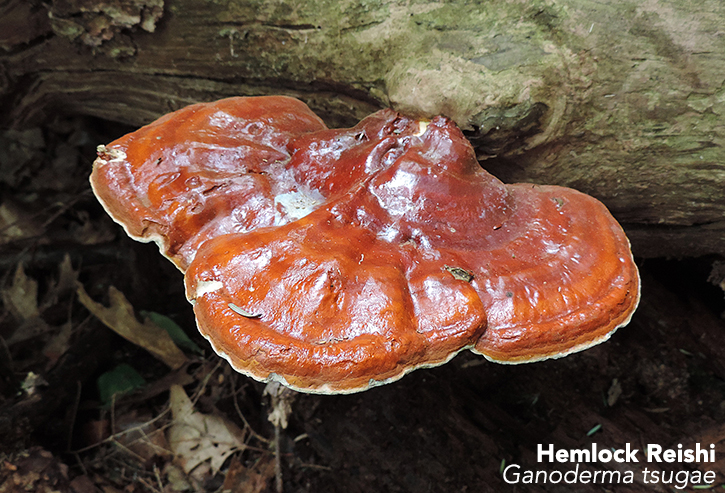
However, while its number of polysaccharide fractions may not be its most impressive feature, Chaga certainly excels in a particular way. Beta-glucans belong to particular class of polysaccharides that may provide the most benefit to the immune system, and research has shown that a large percentage of Chaga’s polysaccharides are in fact beta-glucans (20).
Other mushrooms that have been shown to contain immuno-regulating polysaccharides include (21):
—Snow Fungus (Tremella fuciformis)
—Split-Gill (Schizophyllum commune)
—Umbrella Polypore (Polyporus umbellatus)
—Lion’s Mane (Hericium erinaceus)
—Reishi (Ganoderma lucidum)
—Artist’s Conk (Ganoderma applanatum)
—Shiitake (Lentinus edodes)
—Velvet Foot (Flammulina velutipes)
To summarize: Chaga contains structural components known as polysaccharides. These compounds, including beta-glucans, demonstrate antioxidant and immuno-regulating properties. Many medicinal mushrooms contain immuno-regulating polysaccharides, including Reishi, Maitake, Lion’s Mane, and Shiitake. Polysaccharide levels from a few of these species may outnumber those found in Chaga.
Antioxidants
Both classes of compounds discussed thus far — triterpenes and polysaccharides — demonstrate strong antioxidant activity. Oxidation is a natural process in the human body that, if left unchecked, can result in conditions such as atherosclerosis, diabetes, and Alzheimer’s disease (just to name a few). Antioxidants combat the process of oxidation by neutralizing reactive molecules in our bodies known as free radicals.
Triterpenes found within Chaga have the ability to scavenge a reactive and potentially damaging molecule known as DPPH. Polysaccharides within Chaga can scavenge DPPH as well, though they also have the ability to scavenge a reactive molecule known as the superoxide radical. (Triterpenes do this as well, though to a lesser extent.) This potentially destructive molecule has been implicated in numerous diseases, including diabetes and cardiovascular disease (22, 23, 24).
Obviously, Chaga isn’t the only source of antioxidants. Within the human body, a built-in mechanism is already in place. An enzyme known as superoxide dismutase targets and neutralizes the superoxide radical, helping to prevent oxidative damage. Additionally, other species have been shown to demonstrate similar effects. For example, Reishi (G. lucidum) and the Umbrella Polypore (P. umbellatus) both possess superoxide radical scavenging ability, and both were shown in one particular study to demonstrate the highest scavenging effects of 8 mushrooms tested (25).
Another study compared the antioxidant and immuno-modulatory activities of aqueous extracts from Chaga, Cordyceps (Cordyceps militaris), and Cat’s Claw (Uncaria tomentosa). Chaga certainly demonstrated strong antioxidant effects in this study, and similar effects were observed with Cordyceps.
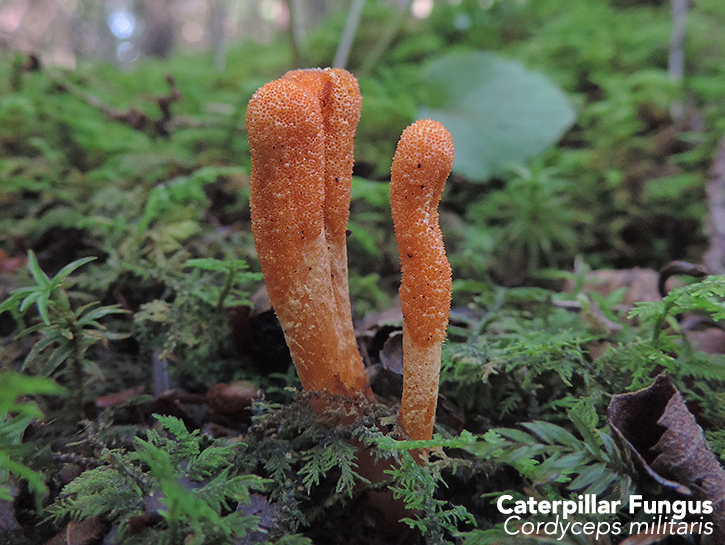
Researchers found, however, that Cat’s Claw displayed the strongest activity in scavenging both the superoxide radical and DPPH — which, if you will recall, are two highly reactive molecules implicated in oxidative damage. When tested on mice, Cat’s Claw was the optimal species to exhibit anti-inflammatory and anti-cancer effects (26).
It’s also worth noting that pure vitamin C, or L-ascorbic acid, was generally just as effective, if not more effective, in displaying antioxidant activity compared to the other three species tested (this was usually seen in higher doses).
To summarize: Chaga, due to its concentration of triterpenes and polysaccharides (among other compounds), demonstrates strong antioxidant effects. Chaga is particularly effective against two reactive molecules — DPPH and the superoxide radical. Other species that demonstrate powerful antioxidant effects include Reishi, the Umbrella Polypore, Cordyceps, and Cat’s Claw. Vitamin C is also a potent antioxidant with impressive physiological effects.
Anti-Diabetes
Several studies have suggested that Chaga contains compounds that may be useful in the treatment of diabetes (27, 28, 29, 30). Many of these compounds have been shown to inhibit alpha-glucosidase — an enzyme that breaks down starch and simple sugars to glucose. By inhibiting this enzyme, glucose absorption slows down in the body, ultimately reducing the impact of carbohydrates on blood sugar. Chaga, with its ability to inhibit alpha-glucosidase, is therefore a promising candidate in the treatment of diabetes.
Another highly sought after fungus with similar anti-diabetic activity is the Maitake mushroom. Maitake extracts have been shown to inhibit alpha-glucosidase. Two of its compounds, oleic acid and linoleic acid, may be responsible for this inhibition.
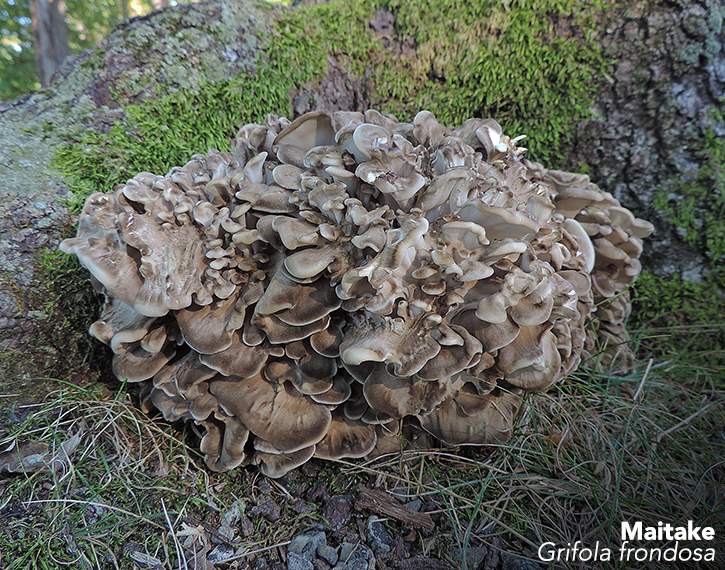
Stinging Nettle (Urtica dioica) leaf extracts have also been shown to display blood sugar-lowering effects in patients with type 2 diabetes.
Several other species possess anti-diabetic properties. The list is much too vast to include here, though an online search will quickly yield additional sources.
To summarize: Chaga extracts, with their ability to inhibit the enzyme alpha-glucosidase, have been shown to offer support for diabetic conditions. Similar effects have been seen with the Maitake mushroom and Stinging Nettle.
Conclusion
Clearly we’ve only featured a snippet of Chaga’s healing potential without even delving into the anti-inflammatory, anti-microbial, and anti-viral (just to name a few) effects demonstrated by various Chaga extracts.
There are still other classes of biologically relevant compounds — including the polyphenols, sterols, and melanin — that could be discussed in depth. While many of these compounds can be found in numerous plants, fungi, and even animals, there are some compounds that are entirely unique to the Chaga fungus, ones not intrinsic to other species. Inotodiol, an anti-tumor compound found only in Chaga, is just one example (31).
Remember, this article is not meant to suggest that substituting another species for Chaga can serve as a complete replacement for all its medicinal effects. Nor is this article’s intention to undermine Chaga’s medicinal actions by pointing out that other species may outperform Chaga in certain experiments.
Individuals who lack access to Chaga, though wishing to experience similar health benefits, may find this information useful. Even seasoned hunters with seemingly unlimited access to Chaga can benefit from this information, for the simple reason that dietary diversity has been historically shown to be a key component of optimal health.
Our ancestors understood this last point, as evidenced by the extensive number of plant, animal, and fungal species consumed as part of traditional diets around the world. Today, the vast majority of Americans rely on only a handful of species (i.e. corn, wheat, and soy) as dietary staples, though despite their potential purity and cleanliness (assuming organic farming practices), these few species cannot constitute an optimal diet without the inclusion of dozens more species from the land.
And so it is with Chaga. As fantastic as its medicine may be, surely our health — and the health of our land — would benefit from the addition and inclusion of other medicines from all kingdoms of life.
Enjoy Chaga if its medicine presents itself to you. If you live outside Chaga’s boundaries, or if you’re interested in protecting its existence by acquiring alternative sources of medicine, familiarize yourself with the dozens of other species of plants and mushrooms mentioned in this article. Your future self may surely thank you.
To your health!
-Adam Haritan
Email
Facebook
Instagram
YouTube

